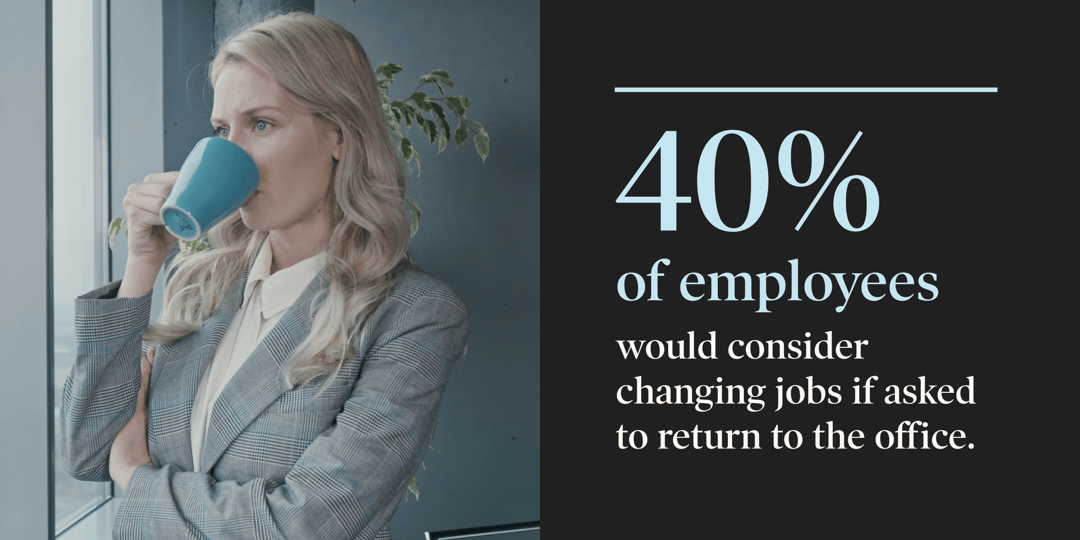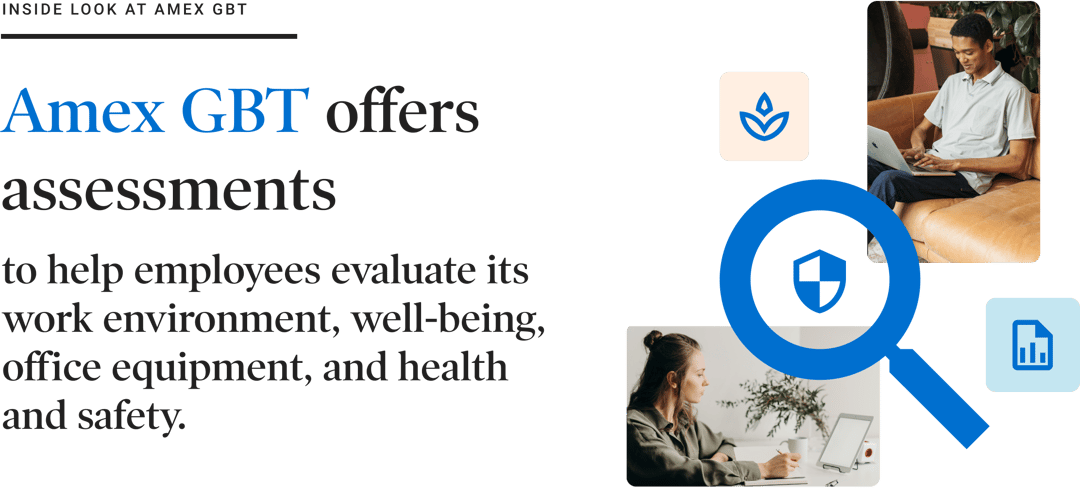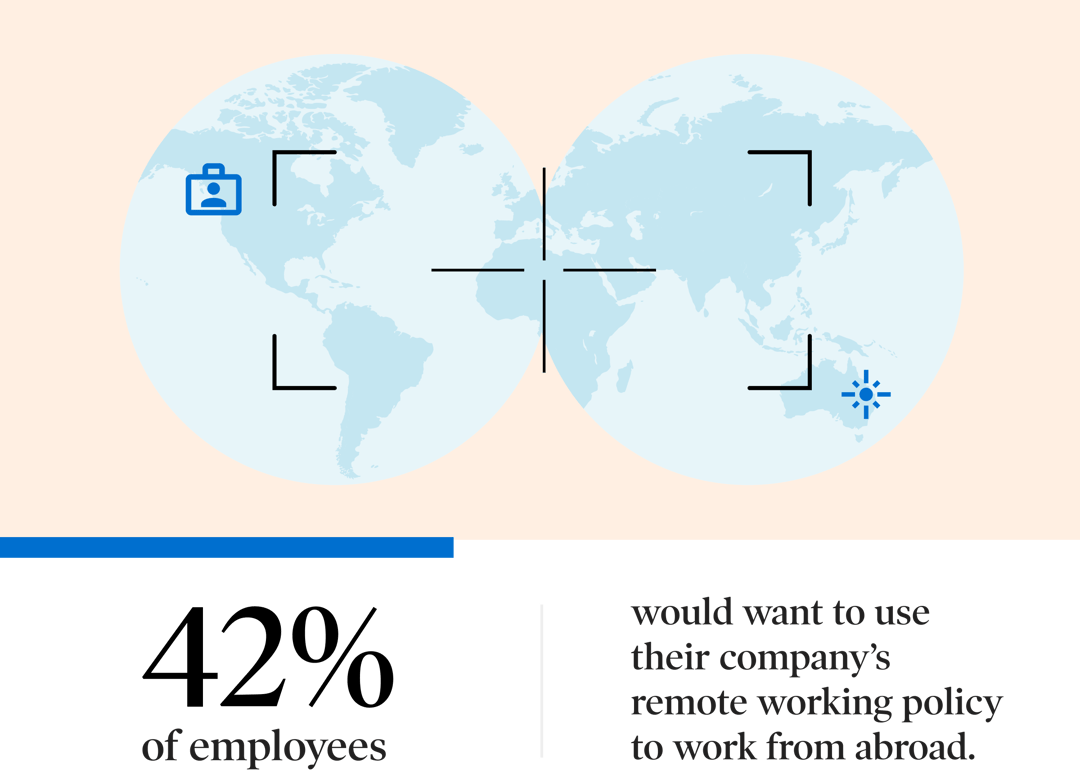As the new normal of work takes shape, how and where we work continues to evolve. Some organizations are gearing up for a return to the office, but most employees are not so thrilled with going back full-time.

Since the pandemic, there’s been a distinct preference for remote work:
-
Businesses are offering employees the option to work remotely – a powerful talent acquisition and retention tool.
-
87% of employees take advantage of the opportunity to work from home.
American Express Global Business Travel (Amex GBT) knows all about remote workforce management: over 80% of its US-based employees have worked from home for over a decade. More recently, employee well-being has become increasingly important in building a resilient workforce – and thus an integral element in the way it supports remote workers.
With that in mind, here are key insights from Amex GBT to help you support the health and headspace of employees working virtually.
Foster connections among co-workers
Organizational belonging
To connect remote workers to their organization or each other, leaders can focus on simple ways to nurture a sense of community. A branded Zoom or video conferencing background featuring the organization’s logo can be one way to unify a dispersed workforce and show company pride. Here are some other ideas:
-
Virtual one-on-one coffee chats between employees can promote a sense of connection, while helping new employees integrate. Schedule these chats into each person’s calendar as a reminder on a biweekly or monthly basis.
-
Create channels or groups in your chat platform for special projects, but also for interests and hobbies. This helps team members collaborate, bond, and stay connected.
In-person collaboration
Even employees working at home full-time may crave occasional face-to-face interactions. In-person collaboration can also help new hires get familiar with company culture, while nurturing cohesiveness and creativity among team members. Here are a few questions to ask yourself when planning in-person meetings:
-
Could this meeting be just as effective virtually? Connecting in person is valuable, but not always the most productive. For example, is an in-person all-hands meeting essential? Or could it be more practical as a pre-recorded video that employees can watch in their own time?
-
Is the meeting task-focused or relationship-based? When your team has a chance to meet face-to-face, prioritize activities to help reinforce the connection between team members. Think team building, leadership development, or creative brainstorming.
-
Am I including everyone? Virtual meetings are sometimes more inclusive: they include employees in different locations, parents with at-home responsibilities, and people with physical limitations or mental health concerns.
Because many companies have reduced or given up their office space, bringing teams together may entail travel to an off-site location. Through its Workspaces platform, Amex GBT offers employers the ability to book a private venue where individuals or small teams can work outside the home for the day.
Focus on mental health and emotional well-being
Employees are combatting long-brewing burnout and anxiety, intensified by the challenging circumstances of the past couple of years. How can you prioritize well-being for your virtual or hybrid workforce?
Many employers are taking a more direct approach to addressing employee stress. In a recent white paper, Amex GBT shares how some organizations are supporting their teams:
-
Shutting down for a wellness week and “synchronous” time off
-
Paying employees extra to take vacation days
-
Offering free, easy access to mental health support and therapy
-
Partnering with corporate well-being providers

Promote physical health
It’s not uncommon for desk workers to deal with health and safety issues:
-
Eye strain from inadequate lighting or computer glare
-
Musculoskeletal disorders from poorly adjusted chairs
-
Headaches from prolonged screen time or bad posture
But working from home can amplify the toll on the body. With the “restroom” and “cafeteria” next to them in their home office, employees lose opportunities to take much-needed breaks and move their bodies.
If remote work is part of your policy, consider supporting employees with a work-from-home allowance to help them build an ergonomic and productive space. You can also provide office equipment to help them work comfortably, such as a wireless keyboard, mouse, and headset.
Organizations can also have a positive impact by making it simple to prioritize physical health. Easy access to wellness resources – such as stretches to do at a desk, at-home exercises, and ways to boost mindset – can encourage employees to put their health first.
Discover Dialogue's Wellness Program
Provide (even more) flexibility
On top of a hybrid or remote work policy, many employers now have work-from-abroad options. If a remote workplace gives employees the flexibility they need to do their best work while prioritizing well-being, then work-from-abroad takes it a step further. It allows employees to focus on personal growth and goals, without sacrificing their professional development.

The ability to work from abroad resonates with people’s desire to combine multiple functions:
-
Work responsibilities
-
Hobbies
-
Personal relationships
-
Cultural exploration
-
Rest and recovery
Work-from-abroad policies and other transformational perks, such as four-day work weeks or sabbaticals, are still new, but the well-being impact is already measurable. For employees, this means:
-
Better control of their schedule. People can prioritize their families, their health, and other responsibilities.
-
Enhanced focus and performance. Different people feel productive at different times and in different ways.
-
Improved work-life balance. Flexibility means that people have more capacity to focus on hobbies, mental health, and social life.
For employers, it might mean:
-
Access to a larger pool of talent
-
Improved employee retention
-
Lower costs associated with office space and transportation
Leading with wellness in mind
Employees, more than ever, are prioritizing their well-being. Employers who fail to do the same are more likely to underperform and miss out on top talent. In fact, 90% of employees who feel cared for would say that their organization is an exceptional place to work – compared to only 9% of those who don’t feel cared for.
While putting well-being first can be challenging in a virtual or hybrid workplace, it’s not impossible. A focus on mental health, physical wellness, and essential benefits goes a long way in showing your employees that you care.
Connect with a representative at meryam.farhat@amexgbt.com




 Canada (EN)
Canada (EN)
 Global (EN)
Global (EN)









